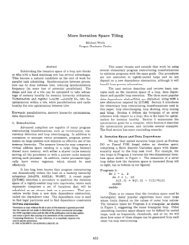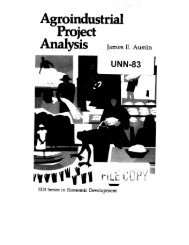Chapter 17 Radio Propagation Models
Chapter 17 Radio Propagation Models
Chapter 17 Radio Propagation Models
Create successful ePaper yourself
Turn your PDF publications into a flip-book with our unique Google optimized e-Paper software.
[other-options] are used to specify parameters other than their default values. For the shadowing model there is a<br />
necessary parameter, -r , which specifies the rate of correct reception at the distance. Because<br />
the communication range in the shadowing model is not an ideal circle, an inverse Q-function [20] is used to calculate the<br />
receiving threshold. For example, if you want 95% of packets can be correctly received at the distance of 50m, you can<br />
compute the threshold by<br />
threshold -m Shadowing -r 0.95 50<br />
Other available values of [other-options] are shown below<br />
-pl -std -Pt <br />
-fr -Gt -Gr <br />
-L -ht -hr <br />
-d0 <br />
<strong>17</strong>.5 Commands at a glance<br />
Following is a list of commands for propagation models.<br />
$ns_ node-config -propType <br />
This command selects in the simulation. the can be<br />
<strong>Propagation</strong>/FreeSpace, <strong>Propagation</strong>/TwoRayGround or <strong>Propagation</strong>/Shadowing<br />
$ns_ node-config -propInstance $prop<br />
This command is another way to utilize a propagation model. $prop is an instance of the .<br />
$sprop_ seed <br />
This command seeds the RNG. $sprop_ is an instance of the shadowing model.<br />
threshold -m [other-options] distance<br />
This is a separate program at ~ns/indep-utils/propagation/threshold.cc, which is used to compute the receiving threshold for<br />
a specified communication range.<br />
168














![Problem 1: Loop Unrolling [18 points] In this problem, we will use the ...](https://img.yumpu.com/36629594/1/184x260/problem-1-loop-unrolling-18-points-in-this-problem-we-will-use-the-.jpg?quality=85)

